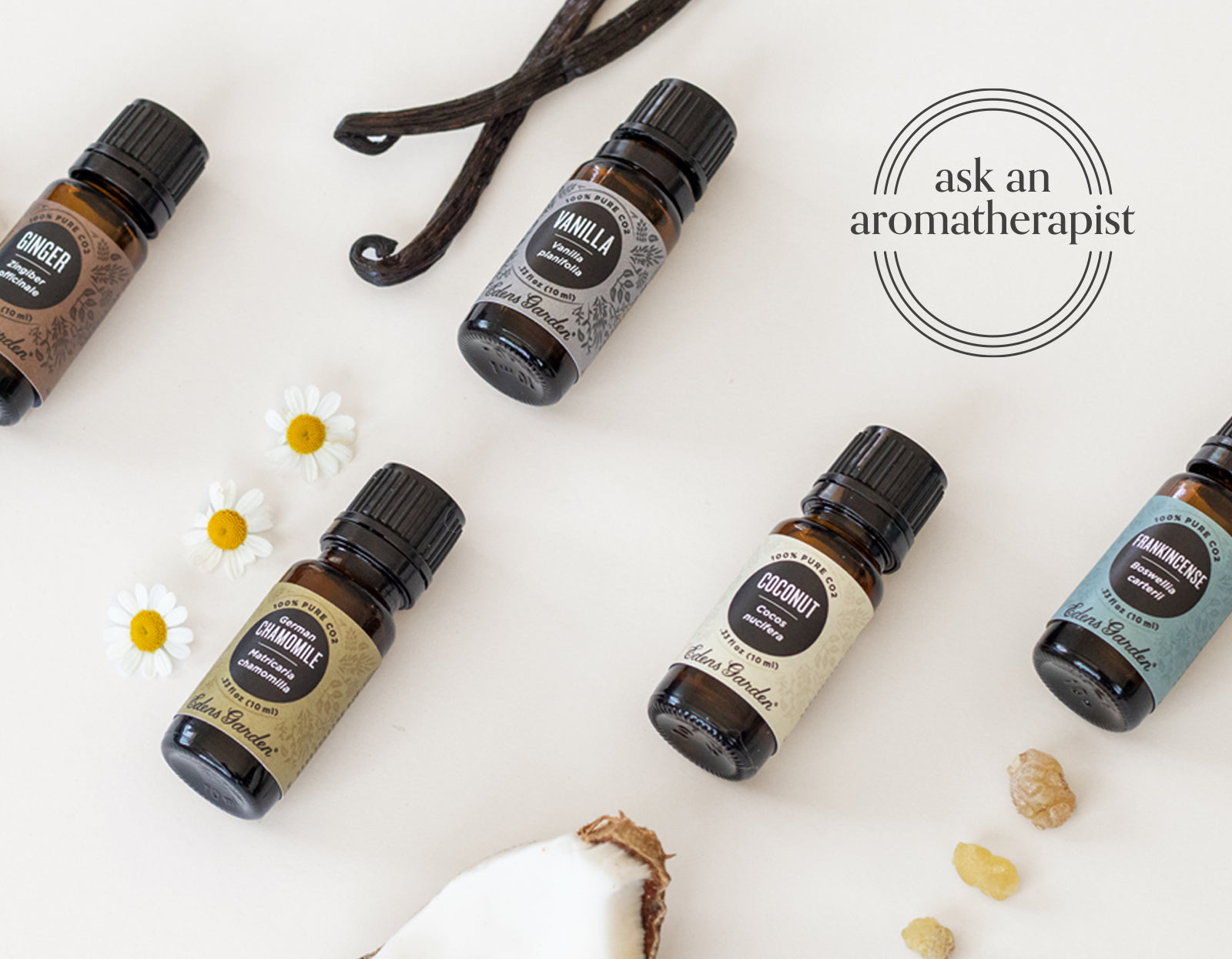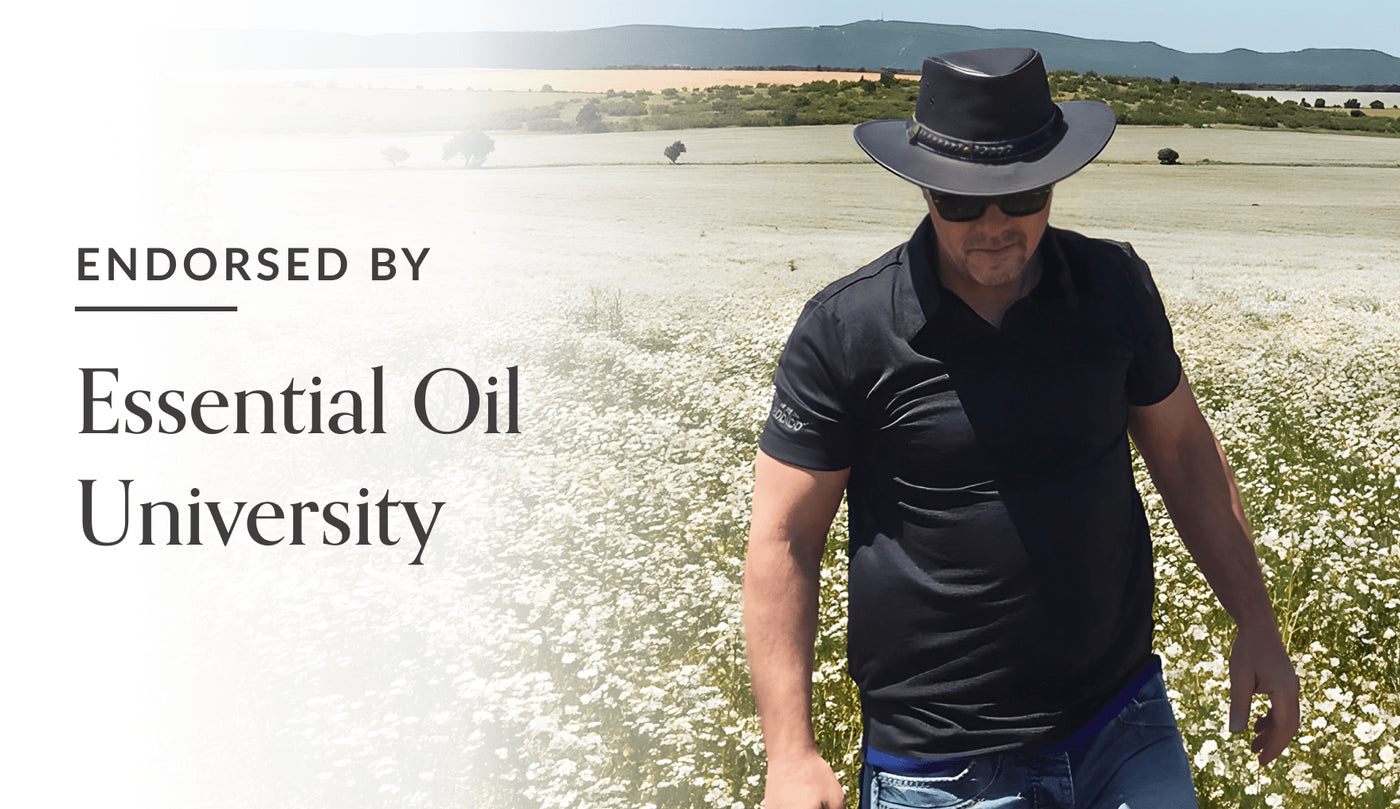AAA: What Are CO2 Oils And How Do I Use Them?

Most people know a handful of facts about CO2 – it stands for carbon dioxide, it’s a gas and we exhale it. So how does this relate to aromatherapy?
A fairly new development in the aromatherapy world, CO2 oils are produced by supercritical carbon dioxide being used as a solvent to extract oil from plant material. This produces oils that are similar yet different from essential oils and absolutes which we call “CO2 oils,” “CO2 extracts” or simply “CO2s.”
At Edens Garden, we offer a variety of 100% pure CO2 oils with rich benefits and aromas. Learn more about CO2s and how to use them in this helpful guide.
How Are CO2 Oils Made?
As alluded to earlier, CO2 oils use supercritical carbon dioxide to extract oil from plant material. But what does that mean? Let’s break it down. Supercritical CO2 refers to carbon dioxide gas that’s pressurized into the density of a liquid. Just as chemical solvents are used to extract oil from plant material, supercritical CO2 acts as the solvent. However, unlike chemical solvents which must be carefully separated from the oils they produce (at times leading to trace amounts of solvent being left in the oil), carbon dioxide is separated from the oil by simply being returned to its gaseous state, leaving behind no trace of solvent.
Click here for a visual on how CO2 extraction works.
Why Are CO2s Made?
Besides being produced for aromatherapy use, CO2s are also used in the food and beverage industry, along with the pharmaceutical industry.2 And when it comes to ingesting essential oils, the same rules apply with CO2s.
What’s The Difference Between Essential Oils And CO2 Oils?
The way in which CO2s and essential oils are obtained produces oils with slightly different components. For example, Ginger CO2 might contain gingerol and zingerone but Ginger essential oil will not.2 This is caused by the way CO2 interacts with plant material versus how water, in steam distillation, interacts with plant material. CO2 extraction also does not cause the plant material to undergo any heating, whereas steam distillation and even cold pressing may result in some heating which can in turn lead to a loss of natural plant components.
In general, it can be said that CO2 oils are closer in aroma to the plants they’re derived from, contain richer therapeutic properties and have longer shelf lives than their essential oil counterparts.
How Do I Use CO2 Oils?
The benefits of CO2 oils can be obtained the same way essential oils are – by diffusion, topical application and by adding them to your DIY formulations.
Additional Ways To Use CO2 Oils
* A skin patch test is recommended before using a new blend or oil topically.
** When diffusing in public, assess people’s ages, conditions, sensitivities and any allergies they may have.
[1] What are CO2 Extracts? | AromaWeb. (n.d.). AromaWeb. Retrieved July 1, 2020, from https://www.aromaweb.com/articles/whatco2s.asp
[2] Tisserand, H. (2020, July 7). CO2 extracts - what are they and how they are made. Tisserand Institute. https://tisserandinstitute.org/learn-more/co2-extracts-spotlight/
[3] Is it Safe to Ingest Essential Oils? (2018, January 30). Edens Garden. https://www.edensgarden.com/blogs/news/is-it-safe-to-ingest-essential-oils




Leave a comment (Comments will be approved before showing up)